Bob had one request for a trip in summer of 2019: Calabria! I said I’d plan it. He had another request: by bicycle. I talked him out of that one. Listen: if you haven’t visited the toe and the sole of Italy’s boot—you could say the soul of Italy—you must! Now—before it’s discovered, “improved” with infrastructure, and destroyed by tourism.
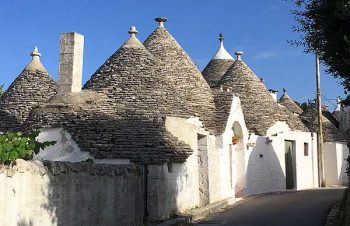
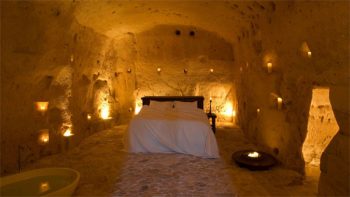
A lifetime of travel, from the obligatory highlights to exotic hideaways, had not prepared me for the variety and authenticity of southern Italy; a collection of unique fantasy-towns as if designed as movie sets. Want magical realism? Otherworldly Alberobello looks built by Disney—or goblins; yet its peculiar pointy troll-houses have stood for hundreds of years—but nowhere else on Earth. Matera is a city of caves pockmarking a mountain, eery and surreal, like no place else, just waiting to be the set of a historical thriller. Oh, wait—that’s been done—lots.
The small section of Italy we traversed, comprising only three of the country’s 20 regions: Puglia, Calabria, and Basilicata, has such diversity, drama, history, and beauty; but what impressed me most was its variety. Not only were our destinations vastly different from one another, they were each like no place else on the planet.
Below: In Calabria, at the toe of Italy’s boot, almost touching Sicily, a mighty, fortress-topped rock rises from the edge of the Strait of Messina, dividing the twin towns of Scilla, a beach resort, and Chianalea di Scilla, a fishing village. This video shows Scilla as seen from the fortress. You can see Sicily in the background, and a swordfishing boat at the end.
Italy has so many great cities and villages, too many for most travelers to visit in a lifetime. Simply because it’s unknown, southern Italy is low on the totem pole of places to visit—but that can’t last. The travel industry is desperate for new, compelling, safe destinations. I’m afraid the bottom of the boot will soon be ruined by fast roads, megahotels, fast-food chains, and cruise ship ports. Please, no!
Or… it may be protected by the very force of danger underlying the superficial beauty of the region: the mafia. The ‘Ndrangheta crime syndicate of Calabria is Italy’s richest and most powerful mafia, if not its most well-known. Specializing in drug trafficking, extortion, and money laundering, ‘Ndrangheta’s tentacles snake into activities including construction, real estate, finance, prostitution, arms trafficking, even counterfeit olive oil, up throughout Italy, and around the world. Local business are shaken down for protection money; it’s a way of life. But if cruise lines try to establish nodes here, and big hotel chains want a foothold, will these multinationals pay up? Could that be why southern Italy maintains its charms to us, mere brief visitors that we are? Because we don’t see the fear and ugliness below the surface, and the big players refuse to play the game? The biggies not paying protection money may be protecting the region itself.
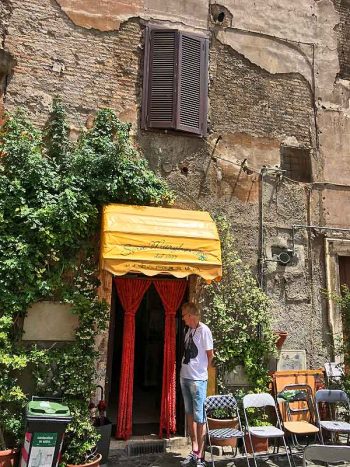
Bob got a head start with ten days alone in Rome for a bizarre mix of thiefhunting and shopping. When I met him there I had one goal: beeline to the Jewish Ghetto district to eat carciofi alla giudea, also known as artichokes alla Romana. Their season is short and the list of expert preparers even shorter. We headed straight to Sora Margherita, a hole-in-the-wall almost 100 years old, where deep-fried artichoke leaves crackle in the mouth like hot salty potato chips and top every table in the little restaurant. I crave these!
We also splurged on a Michelin-recommended restaurant—note: not starred—called Mercerie, where we had many creative courses based on, but more elegant than, street food. From the cocktail menu, we couldn’t resist a magical color-changing blueberry cocktail called TRANSgender. Served deep blue, the drink turned pink and effervescent when we poured in a little flask of lime juice.
Being food-centric, I did seek out quaint and charming cafés and restaurants in every destination. We enjoyed wine or cocktails (or both!) in picturesque spots every day, people-watching, view-gazing, just soaking it all in. This trip was all about enjoying; no research, no work!
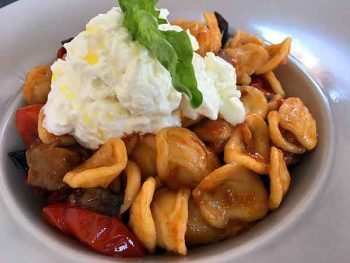
I also insist—always!—on eating local when we travel. Being June, we had a bounty of fresh fish and produce, and everywhere, the local pasta specialties, pastries, and desserts. And, of course, pizza. We became obsessed with tartufo di Pizzo, a cocoa-dusted chocolate-and-hazelnut ice cream bombe with a surprise center, and affogato, gelato topped with espresso or liquor. Coffee bar owners became our best friends, as well as any cute joints that made a good Campari spritz against a view.
Bari, on Adriatic Coast
From Rome we flew to Bari in Puglia, our gateway to the south. We stayed in an ancient stone building in the historical district; a room in an apartment that was a B&B. The owners also ran a tiny coffee and gelato shop just below the rooms, where we had our breakfasts. It was a lovely beginning and an ideal location.

Late mornings, grandmothers brought tables and chairs into the narrow alleys where they sat gossiping while rolling and shaping the traditional pasta, orecchiette. Little packets were for sale, but most of their pasta goes to the neighborhood restaurants.
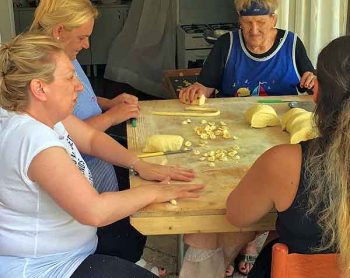
It’s not supposed to though. Italy and the EU require restaurant pasta to be “traceable” and clearly sourced. Meaning from a regulated factory, not from an alley granny. Police inspectors have been out snooping around, busting restaurants that can’t prove provenance. Generations of Bari women and girls have brought in funds through pasta-making, so this new crackdown, only as of 2019, is upsetting the nonnas and the restaurateurs. In the clutches of the ‘Ndrangheta though, I’m not sure contraband pasta is Bari’s biggest problem.
We stepped into several grand churches and watched three weddings where family members furiously fanned themselves in the breezeless interior. A mysterious parade of musicians and life-sized effigies standing on coffins made a clamorous appearance outside. We followed its chaos across the slick, well-worn stone piazzas that reflected the golden light spilling out of the shops at dusk. We ate octopus sandwiches, having never even heard of octopus sandwiches. Wow, octopus sandwiches!
Evenings, the stone alley intersections came alive with smoke and chatter and pots of boiling oil on rickety stands in which women fried potato wedges. The aromas and flickering fires attracted raucous crowds, with children scampering dangerously close to life-threatening burns.
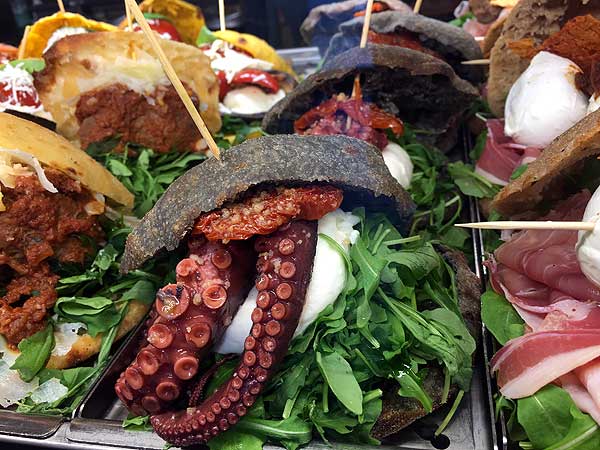
Alberobello
We rented a little car and drove south to Alberobello to stay in a trullo, a conical stone house. (Remember the frizzy-haired troll dolls of the 60s? I bet they lived in trulli.) Though it’s astounding to see the town of Alberobello dense with trulli, thousands of them, we loved even more seeing the lone trullo out in the Puglia countryside.
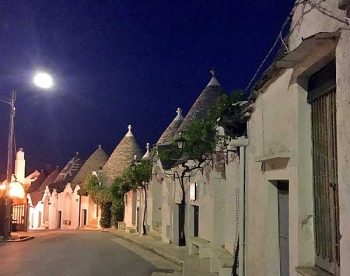
Okay, yes, Alberobello is overly touristic. But it’s mostly full of day-trippers; the place calms down as the sun sets and the buses leave. There’s also the other side of town: peaceful and beautiful even during the day because it’s just residential without all the shops and B&Bs and crowds.
Restaurants in Alberobello, like all the restaurants we visited in Puglia, Calabria, and Basilicata, take pride in serving local ingredients, including wine, olive oil, meats, and produce. Quite a few of them specialized in foraged food boasting honeys, mushrooms, and wild greens. All of them specialized in terraces and cryingly beautiful views.
Chilling in a cool, stone cellar, we tasted seven wines of Puglia with seven local cheeses.
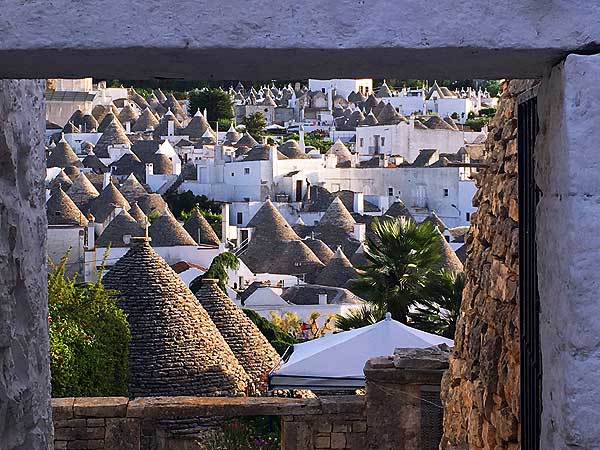
By far the majority of accommodations in the very south of Italy are small guesthouses and B&Bs, full of character, charm, and idiosyncrasies. I spent many hours choosing our rooms for each location, poring over maps and online reviews.
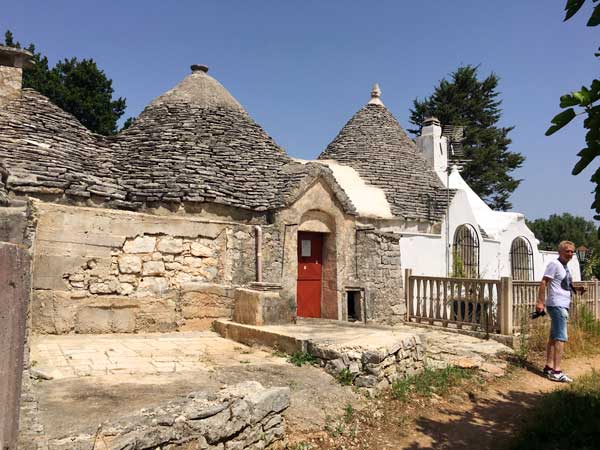
Our trullo was like a studio apartment, with a dining table, stove, and mini-fridge. It had a ladder up to a loft where a couple of kids could be stashed, had we any along. Its glass doors had dainty white curtains on the inside, and a neat silver metal chain flyscreen on the outside.
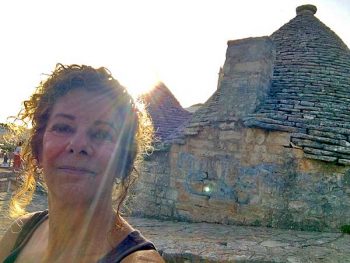
As in Bari, our excellent breakfast was in a small nearby cafe. Despite the daytime crowds, I’d still recommend an overnight visit to Alberobello. It’s that unique, there’s that much to see, that much ground to cover.
Agriturisimo
We drove on to a masseria in Ostuni, a highly-rated farm stay B&B in the Puglia countryside. By this time, we were glad to be driving and not biking. Though the landscape is mostly beautiful, we didn’t need six or more hours of it each day, in the hot sun, watching for potholes (many!) and fast cars (reckless!).
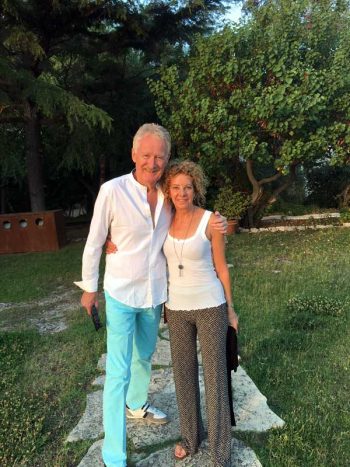
This masseria has been operating since 1500, and the family farmer-owners proudly explained that the rooms are original in look and feel, upgraded only with modern necessities like plumbing, electricity, air conditioning, and wifi. Our two-room suite was gorgeous in its simplicity. Plain polished wood and iron furniture, stone floors, a smooth and shiny wood ladder mounted sideways for hanging clothes, rough white walls, and lots of windows.
The farm has 2,000-year-old gnarled and wind-swept olive trees, each one named and babied, which are still good producers, and stone grinding equipment not quite that old in the cellar. We indulged in the many-course al fresco dinner of all farm and local products with local wine pairings.
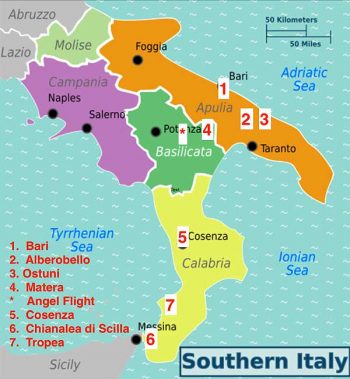
I had wanted to book two nights at the masseria, but it turned out I was glad that only one night had been available. (Until I had their breakfast—then I wished for several more days, it was so exquisite.) The farm was a resort for relaxing, walking among the ancient trees, and lounging around the pool. Delightful, but one day was enough. We didn’t need relaxing. And I was so looking forward to our next destination.
Matera, in Basilicata!
Matera was the 2019 European Culture Capital and, for me, a true highlight. Everything in Matera is a cave, though over the years they built “front ends” at the entrances so that it looks like a mountain of houses. But all the shops, hotels, restaurants, and homes are caves inside the mountain.
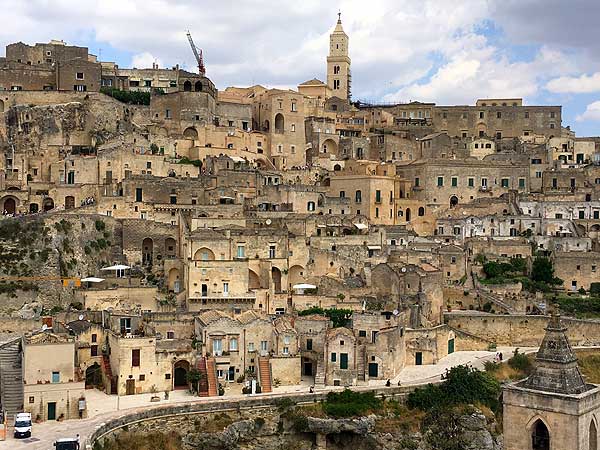
Matera has been settled since the Paleolithic period (10th millennium BC). This makes it potentially one of the oldest continually inhabited settlements in the world; alternatively it has been suggested that the site has been “occupied continuously for at least three millennia and occupied sporadically for 150-700 millennia prior to this.” —Wikipedia
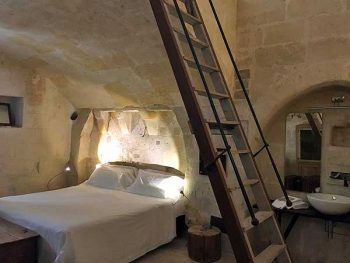
I chose a beautiful little hotel, but only the second-most beautiful. The absolutely most beautiful and atmospheric had only a few rooms (as they all do), was fully booked, and way too expensive anyway.
If you like texture and drama, you’ll find all of Matera’s interiors bewitching. Many elegant rooms lead to rougher irregular caves, deeper and lower into the mountain, often lit only by flickering candles.
We loved where we stayed, and the owner-couple, who have personally renovated and decorated, were always onsite and the warmest of hosts. Taking us deep beneath the entry level, down stairs roughly carved and curving, ducking into one organic space after another, they showed us charming and historic details of their property, several other dramatically-lit bedrooms, and a series of deep caves and cisterns used for meditation and reading (“but no electronics!”).
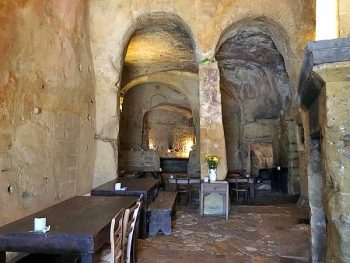
As quoted in Wikipedia above, Matera has been continuously occupied for 9,000 years, but fell into such poverty and disrepair that by the 1950s, the government forcibly evicted the entire city-full of poor and filthy farmers, who lived in the caves with their pigs and goats and diseases. So of course the drug dealers and prostitutes moved in, squatting until in the 1990s when some enterprising people returned and began to renovate the caves.
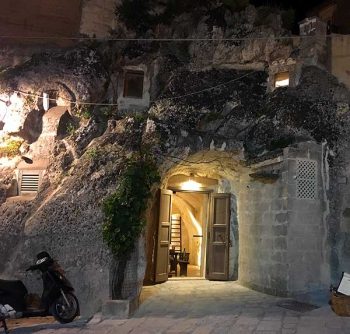
We climbed endless stairs, our feet slipping backwards on the shiny, ancient stones. Of course I wore good tennis shoes, but when you go (do!), bring brand new shoes with grippy rubber soles. Matera has no streets or paths that are not stairs or steeply sloping.
Matera is not easy to get to and tourism is new. We never saw any crowds. We hiked to the highest peaks and best lookout spots and were usually alone. It’s too beautiful for words and photos do not do it justice.
Here’s a short video, less than a minute, of my own 360° panorama. You’ll see how few tourists are there with us, even at the very best viewpoint and the entry of the cathedral. We practically had Matera to ourselves.
And here’s a 14-second selfie panorama:
Flight of the Angel
From Matera, I wish we could have made a detour to the mountain village Pietrapertosa in Basilicata. I learned about it too late—I had already booked our next rooms so we couldn’t go. I am not one for thrill rides or danger for the sake of danger, but I will take a unique opportunity when it presents itself. For example, I’m afraid I might have been one to visit the volcano on New Zealand’s White Island if given the chance, banking on the odds that the volcano hasn’t blown in years and so it wouldn’t during my few hours there. I’ve never been intrigued by zip lines, but see if this description isn’t enticing and irresistible!
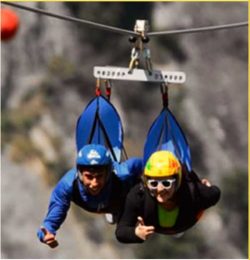
The Flight of the Angel is a high-speed zip wire, offering unparalleled views as you fly between two mountain peaks over a stunning valley. Feel an adrenaline rush unlike any other as you travel at speeds of up to 120 km/h and heights of up to 1020 meters suspended on a wire between the two mountain-top towns. The flight has two lines, the first, known as the “San Martino” line, starts from Pietrapertosa (altitude 1020 m) and arrives in Castelmezzano (arrival altitude 859 m) after covering 1415 meters with the top speed of 110 km/h. The “Peschiera” line starts from Castelmezzano (altitude 1019 m) and arrives in Pietrapertosa (arrival altitude 888 m), covering 1452 meters with the top speed of 120 km/h.
The zip is done in tandem, two people, side-by-side, prone. You spend time wandering the two beautiful mountaintop villages. Sounds like an exhilarating day. I would have done it! Alas, we couldn’t. In June, it was operating on weekends only. In July, every day. We could not fit it into our itinerary. But see the website here! Video here!
The Beauty of Driving
Though we couldn’t do the Flight of the Angel, we were able to stop and detour to our hearts’ content. Mountaintop villages drew us, lone trulli in the picturesque countryside, charming seaside cafes, even a cherry orchard, whose owner showed us with disgust that all his fruit was wormy thanks to recent rains. We made an overnight stop in Cosenza, allowing us an evening to see the city. Driving is the way to do this trip and, again, we were grateful not to be on bicycles.
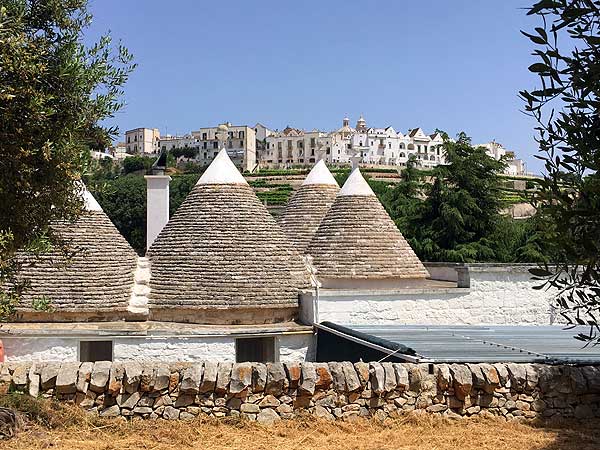
A Fishing Village
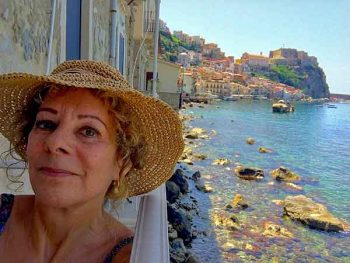
Our next destination was Scilla, at the very toe of Italy’s boot; specifically, Chianalea di Scilla, an old fishing village on the other side of the giant rock that divides the two villages. Here the green mountains slope sharply down to the coast, leaving only a narrow, hilly swath of land for the two villages on the edge of the aquamarine strait of Messina.
Scilla (“Sheela”) is a beach retreat for Italians, a mile-long crescent of white sand covered in lounge chairs and umbrellas, edged with a string of seafood and pizza restaurants. Sicily floats hazily, purpley, in the near distance. At one end of the beach a giant boulder protrudes into the sea, on top of which sits the Ruffo Castle, a fortress. Hiking the steep path and stairs that lead over the little mountain is nothing for fit people. We did it several times a day and the views from the top of the rock are stupendous.
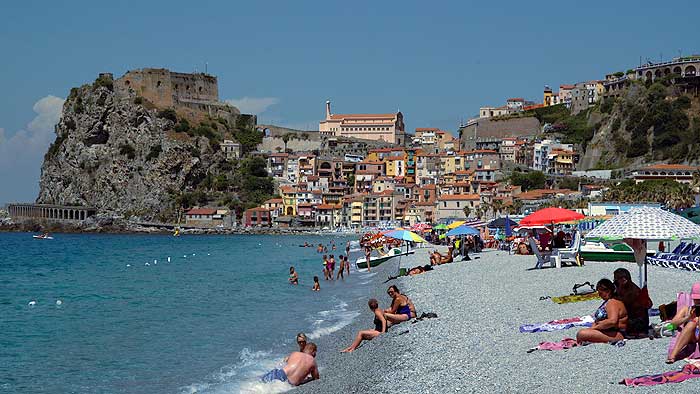
Chianalea di Scilla, where we stayed, is tiny, with houses built directly on the water, as in Venice, with Sicily just a flying fish’s leap across the water. I chose a B&B that was a room in Laura’s house, where she greeted us as if we were cherished guests, brought us little coffees, and served us breakfast in her kitchen. Our room was fixed up as spiffily as any modern hotel room, with a tiny rickety balcony, just big enough for a table and two metal chairs. The balcony was right over the water, which lapped at the house all day and night. Just magical!
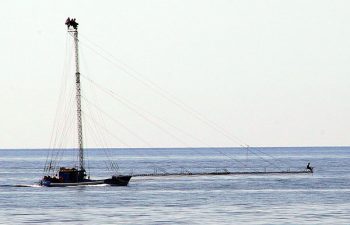
Chianalea di Scilla is a working fishing village. Swordfish is their specialty and the traditional spearfishers’ now-modern boats troll back and forth close to shore every day. The driver steers from 80 feet up on the top of a mast, looking for swordfish in the crystal clear water. When he spots one, another man runs way out on a narrow beam about 70 feet long that sticks straight out from the bow, just above the water. The boat chases the fish until the guy on the bowsprit thingy can harpoon it by hand.
We watched three boats come in one evening and unload their catches. Such a unique and ancient way of fishing. I saw a 100-year-old photo of the local swordfishers at work. The boat was the same, but on a minuscule scale. And the men were wearing ties! I’d have been happy to stay in Chianalea di Scilla for longer. Though small, it felt authentic and relaxed.
Tropea, a Charming Ocean Cliff Town
From Chianalea di Scilla we drove north to Tropea. The previous weeks, when Italians learned that we’d end our trip in Tropea, they’d all sigh, “Aaah, Tropea!”, envy in their eyes. And it is gorgeous, with pretty buildings and piazzas perched high above the beach.
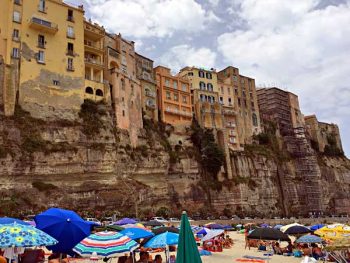
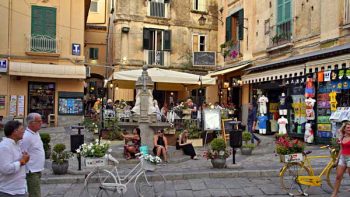
Here, though, we got a rotten B&B, a case of bait-and-switch. So much was wrong with it that I reviewed it on TripAdvisor. But TripAdvisor insisted it was a “vacation rental,” not a B&B, so they wouldn’t post my review. It was all about their “artificial intelligence,” which they claimed humans could not override. After 70 emails back and forth, I gave up and posted the review on my own blog. I’ll spare you the details.
As picturesque as Tropea is, it was a little too touristic and beachy for us. I meant it to be a jumping off spot for day trips in Calabria, but the crappy room brought us down a little, and I think we were both a bit tired of being on the move. So we just chilled, took it easy, and sought out nice spots for cocktails and meals. Though Tropea was our last stop in southern Italy, our trip was far from over.
Appenzell, in the Swiss Alps
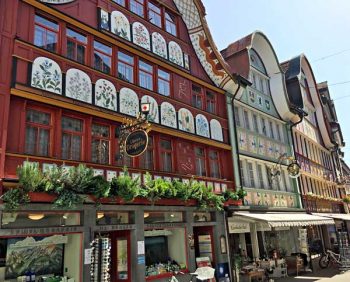
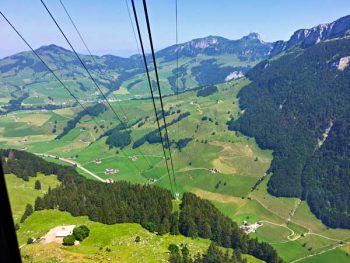
We flew to Zurich, where I’d booked another charming hotel in the old part of the city. We weren’t in the hotel or the city much though, because right away, we were picked up by the police from Bern (no, we weren’t arrested) and driven to Bern, where Bob gave a pickpocket seminar to an auditorium-full of Swiss police. They took good care of us and brought us back to our hotel.
Next morning, a friend of ours, a businessman who lives in the little village of Appenzell, picked us up and drove us to his home. Oh, how beautiful that area is! Like The Sound of Music, with rolling green hills and cows everywhere, and narrow roads that twist out of sight toward jagged snowy mountains. We had dinner at our friend’s house with his wife and three gorgeous little girls, but first, he took us up to the most amazing restaurant for lunch.
Please do read my story about our cliffhanger meal at the Aescher Restaurant, and the unbelievable journey it takes to get there. You won’t believe it!
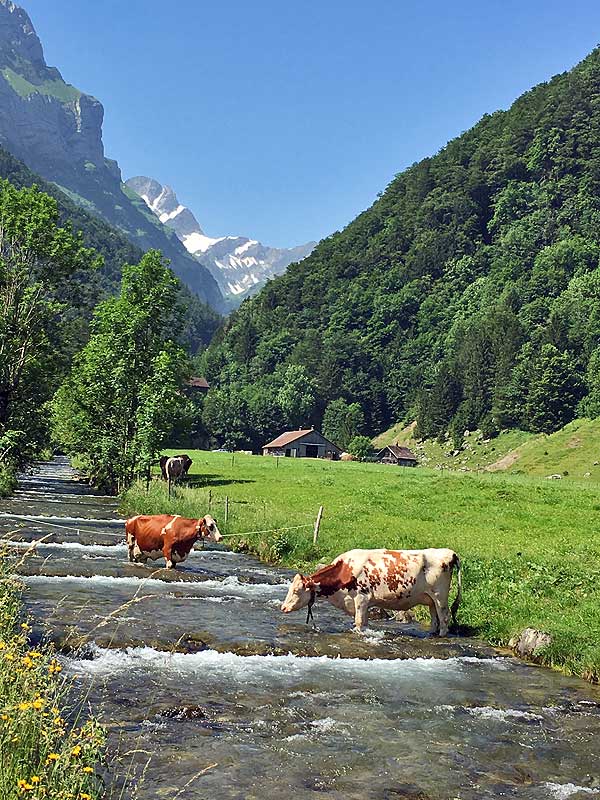




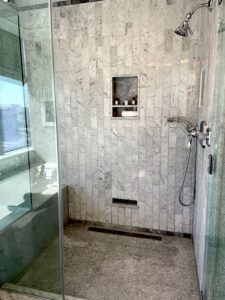
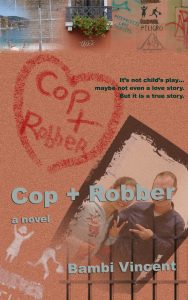
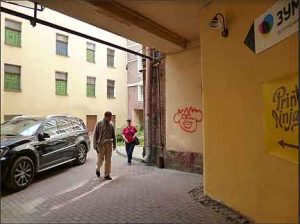
No comment yet, add your voice below!